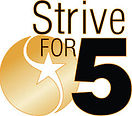
Chapter 3
Carbon and the Molecular Diversity of Life
Bozeman Science: Biological Molecules
Bozeman Science: Carbohydrates
Crash Course: That's Why Carbon is a Tramp
Bozeman Science: Lipids
Bozeman Science: Proteins
Bozeman Science: Nucleic Acids

Scientific Skills Exercise:
Analyzing polypeptide sequence data
Are rhesus monkeys or gibbons more
closely related to humans?
Textbook page 69

Test Your Understanding
Textbook page 71
As you complete test, mark questions with:
a star (I know this),
a checkmark (I might know this),
or a question mark (I don't know, I guessed).
Self-correct.
Write validations/corrections for checkmarks, question marks, and missed stars (oops).

Illustrative
x
a
m
p
l
e
s
Sickle-cell anemia
Endomembrane systems, including nuclear envelope



Penn State College of Medicine Graduate Students Present:
Why do we need fats, carbohydrates, and proteins in our diet?
Click on the Nittany Lion for info.


organic compound
functional groups
polymer/monomer
enzyme
dehydration reaction
hydrolysis
glycogen
cellulose
chitin
catalysts
sickle cell disease
denaturation
pyrimidine
purine
deoxyribose/ribose
ATP
carbohydrates
lipids
proteins
nucleic acids

Concept
A
R
D
S
double helix
anti-parallel

Chapter 3 Lab:
Banana Carbohydrate

Critical Thinking
A: Suppose you are a research assistant on a new planet with 43 amino acids. You have analyzed a polypeptide 153 monomers long. What would be the mathematical probability due to random placement of monomers?
B: As amino acids are determined in the primary structure, we say that randomness is not a factor; describe what factor(s) determine order of amino acids within the primary structure.
C: Given that the function of the egg yolk is to nourish and support the developing chick, explain why egg yolks are so high in fat, protein, and cholesterol.
D: What is the connection between the sequence and subcomponents of a biological polymer and its properties?
E: What is the fundamental basis for the differences between large carbohydrates, proteins, and nucleic acids?
F: Given the sequences of a particular gene in fruit flies, fish, mice, and humans, predict the relative similarity of the human sequence to that of each of the other species.
G: Compare the composition, structure, and function of starch and cellulose. What role do starch and cellulose play in the human body?
H: Why are lipids not considered to be polymers or macromolecules?
I: Explain the basis for the great diversity of proteins.
J: What role does the complementary base pairing play in the functions of nucleic acids?

I can't see the forest for the trees...
Basic Biology Text:
Chapter 2 (All sections)
At a minimum, understand:
Large biological molecules are made of smaller units. Smaller units are bound together through bonds and linkages. Macromolecules include: Proteins, Carbohydrates, and Nucleic Acids. Lipids remain in another category of large biological molecules. Large biological molecules exhibit unique emergent properties arising from their orderly arrangement of atoms.



